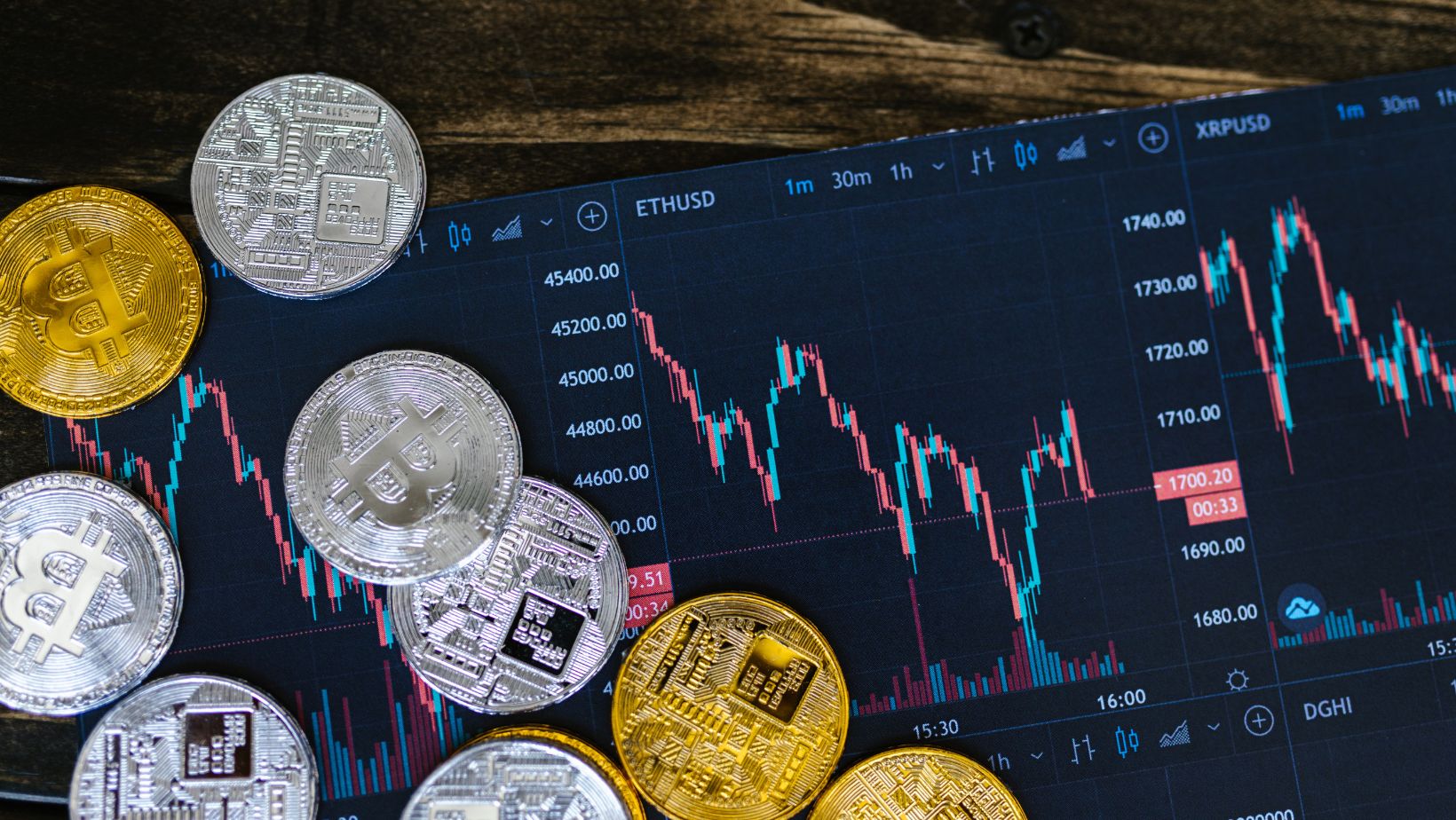Navigating the fast-paced world of cryptocurrency can feel overwhelming, especially with markets that never sleep. You’re constantly watching price charts, analyzing trends, and trying to make the right moves at the right time. That’s where automated crypto trading steps in, offering a smarter, more efficient way to trade.
With automation, you can let advanced algorithms handle the heavy lifting, executing trades based on pre-set strategies while you focus on other priorities. It’s not just about saving time—it’s about maximizing opportunities and minimizing emotional decision-making. Whether you’re a seasoned trader or just starting out, automated crypto trading has the potential to transform how you approach the market.
What Is Automated Crypto Trading?
Automated crypto trading uses pre-designed algorithms to execute trades on your behalf in cryptocurrency markets. These algorithms follow specific rules, such as price fluctuations, market volume, or timing, to make trading decisions without manual intervention.
Automation allows you to monitor and act on market conditions 24/7. This helps you capitalize on opportunities in volatile markets, even outside typical business hours. Terminal-based bots, API integrations, and cloud-based platforms facilitate this process by connecting directly to exchanges.
Advanced features include backtesting strategies and risk management tools. These let you assess a trading strategy’s performance using historical data and set parameters to reduce potential losses. Automation reduces the impact of human error by following predetermined instructions consistently.
Many platforms support popular scripting languages like Python or JavaScript for custom strategies. Alternatively, ready-made trading bots with pre-configured templates cater to novice traders. This accessibility ensures automated trading aligns with varying expertise levels and needs.
How Automated Crypto Trading Works
Automated crypto trading operates by leveraging technology to execute trades based on predetermined strategies. These systems rely on algorithms and tools that process market data and make informed decisions faster than manual trading.
Key Algorithms Used
Algorithms are the foundation of automated crypto trading. They analyze market trends, price movements, and trading volumes to identify profitable opportunities. Examples include trend-following algorithms, which monitor price trends to determine entry or exit points, and arbitrage algorithms, which exploit price differences across exchanges. Advanced strategies also incorporate mean reversion algorithms, which assume that asset prices eventually return to their historical averages.
Role Of Trading Bots
Trading bots automate the process of executing trades. They connect to crypto exchanges using APIs and operate 24/7 without requiring human intervention. These bots follow predefined rules, balancing factors like timing and asset allocation. Some bots specialize in portfolio rebalancing, while others focus on scalping for small profits from frequent trades. Users can customize these bots or choose from pre-configured options to match their trading strategies.
Using A Trading VPS
A trading VPS ensures stability and speed for automated crypto trading. These servers deliver low-latency connections to exchanges, minimizing delays during order execution. VPS platforms also provide consistent uptime, preventing interruptions caused by local hardware or internet failures. This setup is especially helpful for high-frequency trading, where milliseconds can impact profitability. Prioritizing a reliable VPS can enhance the efficiency and accuracy of your automated trading system.
Upgrade your strategies with professional-grade trading servers. These servers ensure high availability, so you never miss a vital market move. Access top-notch computing power to handle advanced trading tools and analytics in real time. Position yourself ahead of the curve with reliable and quick market access.
Benefits Of Automated Crypto Trading
Automated crypto trading offers significant advantages, streamlining your trading process and enhancing overall performance. It combines efficiency, accuracy, and scalability to meet diverse trading needs.
Time-Saving Advantages
Automating crypto trading eliminates the need for constant market monitoring and manual execution. Trading bots operate 24/7, executing trades even when you’re unavailable. For example, during late-night hours or holidays, these bots ensure no profitable opportunities are missed. Automation minimizes administrative tasks like tracking performance metrics or placing orders, freeing up your time to focus on strategy refinement.
Improved Accuracy And Speed
Automated systems execute trades with precision based on predefined criteria. Unlike manual trading, they avoid emotional influences, reducing the risk of errors caused by impulsive decisions. Trades are processed in milliseconds, which is vital in a volatile cryptocurrency market where price changes rapidly affect profitability. For instance, high-frequency trading algorithms analyze complex data and initiate trades faster than human traders, ensuring timely and accurate execution.
Challenges Of Automated Crypto Trading
Automated crypto trading simplifies decision-making and improves trade efficiency, but it comes with specific challenges. Understanding these challenges helps you navigate and optimize your trading experience.
Risk Of Market Volatility
Market volatility poses a significant challenge to automated crypto trading. Algorithms depend on historical data and preset parameters, which may fail during abrupt and unpredictable market changes like flash crashes or sudden price spikes.

These fluctuations can trigger stop-loss orders or incorrect trades, leading to losses. For example, a dramatic shift in Bitcoin’s price outside predicted patterns can bypass trading bot controls. To mitigate this, you should integrate robust risk management strategies and monitor algorithm performances for periodic adjustments.
Dependence On Technology
Automated trading heavily relies on technology infrastructure. System failures, server downtimes, or API connectivity issues can disrupt trade execution. For instance, a lag in internet connection during a critical trade can cost you a profitable opportunity. Trading bots also require regular software updates to adapt to market changes and maintain security. Relying on a secure, low-latency VPS and ensuring consistent monitoring of your systems reduce potential disruptions and safeguard trading operations.
Key Features To Look For In Automated Crypto Trading Platforms
Selecting the right automated crypto trading platform can improve your trading efficiency and profitability. Focus on platforms offering essential features to enhance your trading experience and protect your investments.
User-Friendly Interfaces
Opt for platforms with intuitive designs that simplify navigation and usage. Features like drag-and-drop strategy builders, streamlined dashboards, and clear analytics support both beginners and experienced traders. A responsive interface that adapts to mobile and desktop devices ensures seamless access.
Security Protocols
Prioritize platforms implementing top-tier security measures to protect your funds and data. Look for two-factor authentication (2FA), end-to-end encryption, and secure API key storage. Platforms compliant with regulatory standards or undergoing third-party audits offer added reliability.
Customization Options
Choose platforms allowing strategy personalization to align with varying trading goals. Features like adjustable parameters, AI-based optimization, and script support for programming custom algorithms appeal to advanced traders. Beginners benefit from pre-configured settings with adjustable risk levels.
Popular Automated Crypto Trading Platforms
1. Binance Auto-Trading
Binance Auto-Trading simplifies trading with its comprehensive ecosystem. Offering a mix of trading bots and API-based strategies, it lets you connect directly to Binance’s deep liquidity pool. Features include grid trading, spot and futures bots, and customizable risk management tools. Binance’s robust security system, including two-factor authentication, ensures your funds stay secure.
2. Pionex
Pionex stands out with over 16 free built-in trading bots, catering to a wide range of strategies. These include grid trading for volatility-based profits and dollar-cost averaging (DCA) to reduce risks. Pionex charges a low 0.05% trading fee, making it cost-efficient. Its mobile-friendly app ensures seamless, on-the-go portfolio management.
3. CryptoHopper
CryptoHopper offers advanced algorithmic customization with minimal coding knowledge. Its marketplace supports buying and selling pre-designed strategies, ideal for beginners. It provides backtesting, paper trading, and cloud-based execution. CryptoHopper integrates with multiple exchanges, streamlining diversified portfolio management.
4. 3Commas
3Commas delivers a simple interface and powerful trading bot tools. You can create custom strategies using drag-and-drop functionality or choose pre-configured bots. Its SmartTrade terminal enables setting take-profit and stop-loss targets simultaneously. With support for 18+ crypto exchanges, 3Commas caters to both novices and experts.
5. KuCoin Trading Bot
KuCoin’s trading bot is tailored for grid, futures, and DCA strategies. Accessible via its mobile app, you can automate trades conveniently. KuCoin emphasizes beginner-friendly templates while also supporting customization for advanced users. Its high-frequency trading features suit dynamic, fast-paced markets.
6. Bitsgap
Bitsgap focuses on portfolio tracking and unified access to multiple exchanges. Its grid bots excel in volatile markets, and arbitrage bots profit from price differences between platforms. Risk management tools allow you to optimize entries and exits confidently. Bitsgap supports integrations with 25+ exchanges, enhancing versatility.
7. Shrimpy
Shrimpy prioritizes portfolio rebalancing and long-term investment strategies. It provides automated diversification, helping you maintain desired asset ratios. With API keys for connecting to exchanges like Binance and Coinbase, Shrimpy supports secure, stable automation. Social features let you copy strategies from experienced traders.
8. HaasOnline
HaasOnline’s advanced scripting tools attract professional traders. Its HaasScript language enables crafting specific trading algorithms. You can simulate, backtest, and deploy bots across major exchanges. HaasOnline includes risk management systems for minimizing losses during market fluctuations.
9. Zignaly
Zignaly emphasizes simplicity with managed accounts and profit-sharing services. You can allocate funds to crypto experts who trade on your behalf. This platform eliminates the technical setup, allowing beginners to benefit passively. Transparent performance metrics help you select trusted managers.
10. Coinrule
Coinrule excels with ready-to-use trading rule templates. Designed for ease, it lets you automate strategies without coding.

Choose from over 150 templates, including trend-based and stop-loss strategies. Coinrule integrates with top exchanges, offering versatility for different trading styles.
Conclusion
Automated crypto trading offers a powerful way to streamline your trading process while maximizing efficiency and minimizing emotional decision-making. By leveraging advanced algorithms and customizable strategies, you can stay ahead in the fast-paced crypto market and capitalize on opportunities around the clock.
While automation simplifies trading, it’s essential to remain vigilant about potential risks and choose platforms that align with your goals. With the right tools, strategies, and infrastructure in place, you can unlock the full potential of automated trading and elevate your crypto trading experience.




